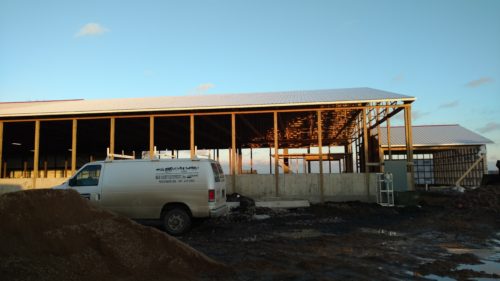Having worked in the feed mill industry for several years, I have some insights on the challenges that face the nutrition in a robot milking systems. Most of our recent robot milking systems involve a voluntary choice by the cows to enter the milking stall, this choice is rewarded and also driven by a treat given in the milking stall, typically as a pelleted feed. PMR (partially mixed rations) at feed bunks, free choice, where nutritionists once balanced a complete TMR (total mixed ration). Feeding for 65% of the dairy cows needs at the feed bunk means that she will be driven to the milking stall for the remainder of her dietary needs. These cows are smart, they like treats but there are some key issues with this style of feeding that will result in success.
- PMR is always tested for moisture changes, even the slightest change in moisture can result in a decrease in visits to the milking stall.
- PMR forages are tested and nutrient values are known so that ration changes can be made before the forage is fed to the cows.
- Pellet quality is maintained, fines are not good for equipment, causing bridging and other issues. Additionally, fines can decrease feed intake or cause rumen issues.
- Pellet palatability: pellets need to be tasty treats for cows, which means they are going to be more expensive and have a limited number of feedstuffs that can be used to make the pellet.
- Pellet moisture: pellets need to be moist enough to make a firm pellet that can withstand multiple equipment handlings but also not so moist that it begins to foster mold or cause bridging.
- A solid relationship is needed with your nutritionist to make sure you are making changes to the cow ration proactively and not reactively. Additionally, a good relationship with your feed company to make sure your pellet deliveries and qualities are to your liking and success.




